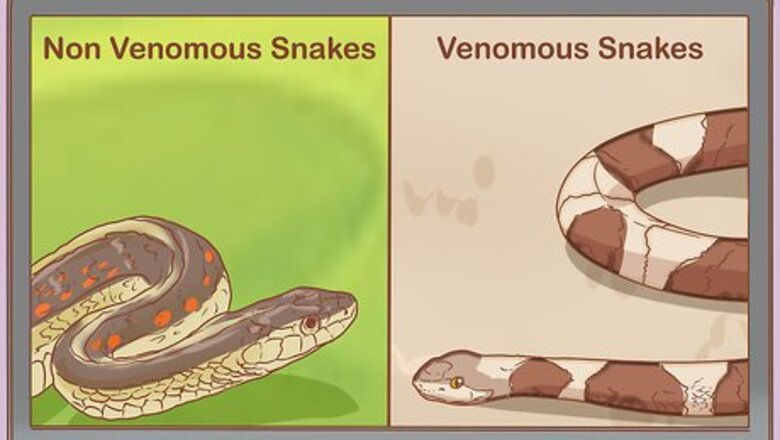
views
X
Research source
known species. As long as you don't look in colder climates, there is a good chance that you can find snakes nearby. Learning where they live and when to look can help your search be a safe and successful one.
Planning Your Search

Research which snakes live near you. Before you go looking for snakes, it's a good idea to learn more about the snakes that live in your area. This information can help you make it easier to locate the snake and avoid any snakes that are dangerous. Try learning more about which snakes you might want to find to make your search a successful one. Learn how to identify venomous snakes. Researching which snakes live in your area can help you identify them quickly in the field. Try to learn which habitats snakes might live in. Some species may like to rest in thick grass while others tend to hide under rocks. Nerodia Clarkii, Nerodia Cyclopion and Nerodia fasciata all live near water. Garter snakes can be found in many different habitats. Try looking in fields, woodlands, or any where near water sources. Milk snakes can live in a variety of habitats as well. However, you can generally find them in areas that offer prey items like rats or other reptiles.
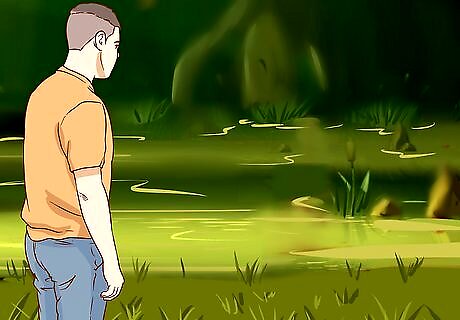
Pick an area to search. After you know which snakes you might want to find, you can begin to plan your search area. Take a look at some maps of your nearby areas to learn where you might want to begin looking. Try to find an area that is likely to be a good match to those habitats your snake is known to live in. Look on a map to find areas like swamps or forests to start looking in. Try to find areas that match a snakes preferences. For example, areas with a lot of sunlight and stones may be preferred basking spots. Some snakes may like to rest in piles of leaves or debris. Looking in forested areas can be a good start.
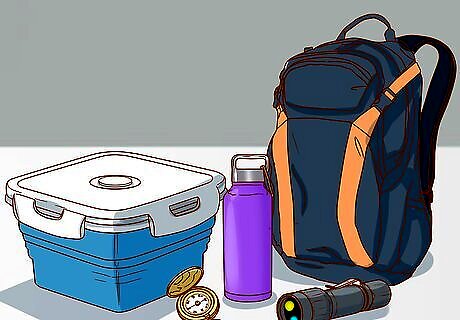
Pack supplies and head out. Whenever you head out into natural areas, you should bring a few basic things with you. These items can help make your snake hunt safe, comfortable, and a lot of fun. Take a look at a few of the basic things you will want to bring with you when you go looking for snakes. Bring some snacks, food, and water with you. Taking a compass, map, and guidebook can be good ideas. Take some kind of light source with you. Wear long pants and tall boots. Both should be made form sturdy material. Bring a field guide with you to help identify snakes that you find. If it's an area with a lot of sunlight, wear sunscreen to prevent skin damage. Bringing a simple first aid kit can be a good idea. Have a long stick or pole to move rocks or logs when looking for snakes.
Searching For a Snake
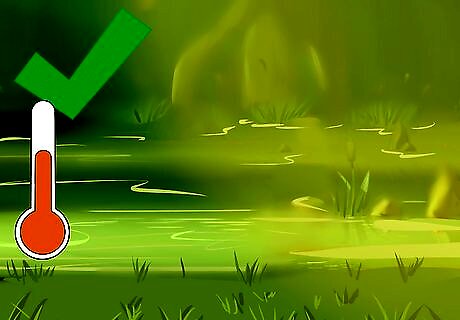
Wait for the right temperature. Snakes are cold blooded and will be more or less active depending on the temperature. It's important that you plan your search for a day that has the ideal temperature for a snake hunt. Keep some of these tips in mind when looking for snakes: Snakes will take shelter during extremely hot temperatures. During cold months, snakes will hibernate in their dens. Most snakes will bask in the warm sun.
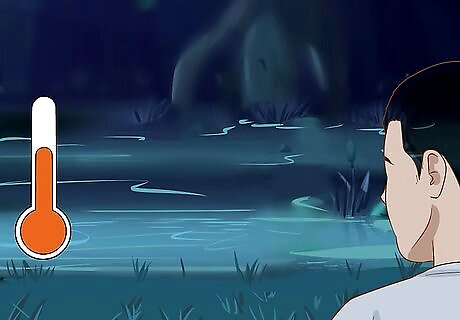
Go at the right time. Different snakes will be more or less active depending on the time of day. Some snakes are active during the day while other are nocturnal hunters. Depending on the type of snake you are looking for, make sure you are searching at the right time of day. Snakes may be more active at night during warmer months. Most snakes won't be very active during the hottest time of day. Many snakes are nocturnal hunters and will be most active at night.
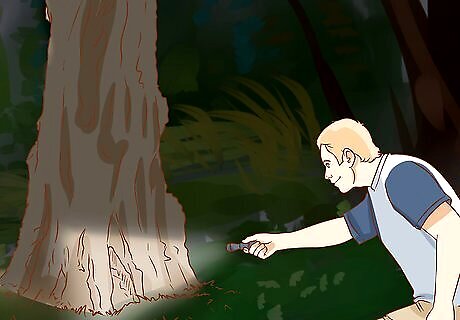
Look in places snakes are found in. Most snakes will have a preferred area or environment that they spend their time in. These areas may be used for basking, hunting, nesting, or resting. Knowing how to spot a snakes favored areas can help you locate them more easily. Try looking for snakes in some of these areas: In piled up rocks or logs. Tall grass. Snakes might live in old rodent dens. Hollow tree knots may hide snakes. They may live around your house as well. Check in any small cracks or spaces under floorboards.
Encountering a Snake
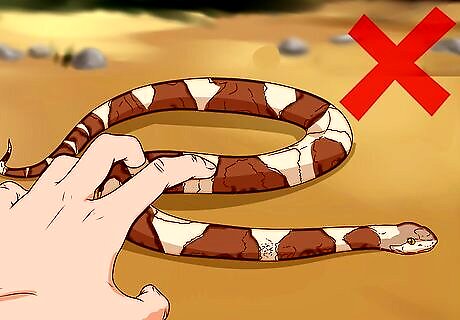
Don't touch the snake. Whenever you are looking for snakes, it's important that you never attempt to touch them or get too close. Although not all snakes are venomous, they can all bite you and some may carry diseases. Stay safe by never touching or picking up any snakes you find during your searches. Probe any areas with a stick or pole when searching for snakes. Never use your hands to search for a snake. Snakes will view any contact as an attack and they will defend themselves.
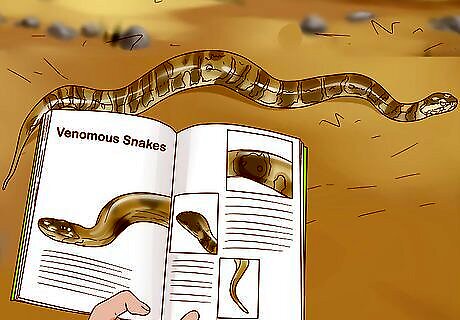
Identify the snake. Once you encounter a snake, you can try to identify it. Take careful note of any details that stand out. You may not be able to read your field guide, so it's important to have an idea of which snakes live near you. Try to focus in on some of these commonly identifying features: Coloration Any unique scale pattern Shape of the body or head Shape of the pupil Size of the snake The area that you found it in

Take a photo. Instead of trying to capture the snake, it's a safer to capture a photograph of it. Whenever you find a snake, take a picture of it to bring back a nice reminder of your search. Photos let you safely share your excitement and interest with others, without bringing harm to either yourself or the snake. Taking a photo can help you identify it later on. You can keep a record of your photos to learn which snakes seem to be more common in your area.
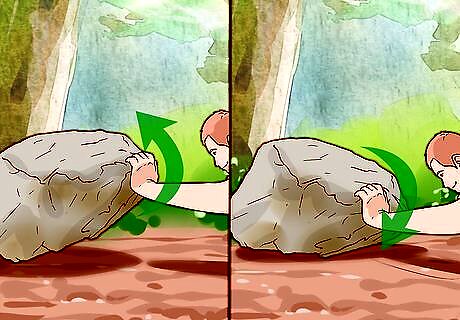
Leave things as you found them. Part of responsibly visiting natural areas is leaving things as you found them. Chances are you will be moving stones, logs, or debris to find snakes that might be hiding. It's a good practice to put any stones or logs back where you found them to prevent disturbing the environment more than is needed. Move away slowly and carefully from any snakes you may encounter. Never leave any garbage or belongings behind. Ideally, you should avoid moving any logs or stones while looking for snakes.

Deal with a snake bite. Although you can be as careful as possible during a snake hunt, accidents can still happen. Getting bitten by a snake can be a serious and immediate medical emergency if it was venomous. Being prepared can help you handle such an emergency. Review these basic tips to help you stay calm and get help if you are bitten by a snake: Stay calm and leave the snake. Call 911 or 1-800-222-1222 (poison control). Remove jewelry or tight fitting clothes in case the area swells. Keep the area at a lower level than your heart. Clean the bite and wait for emergency services to arrive.



















Comments
0 comment